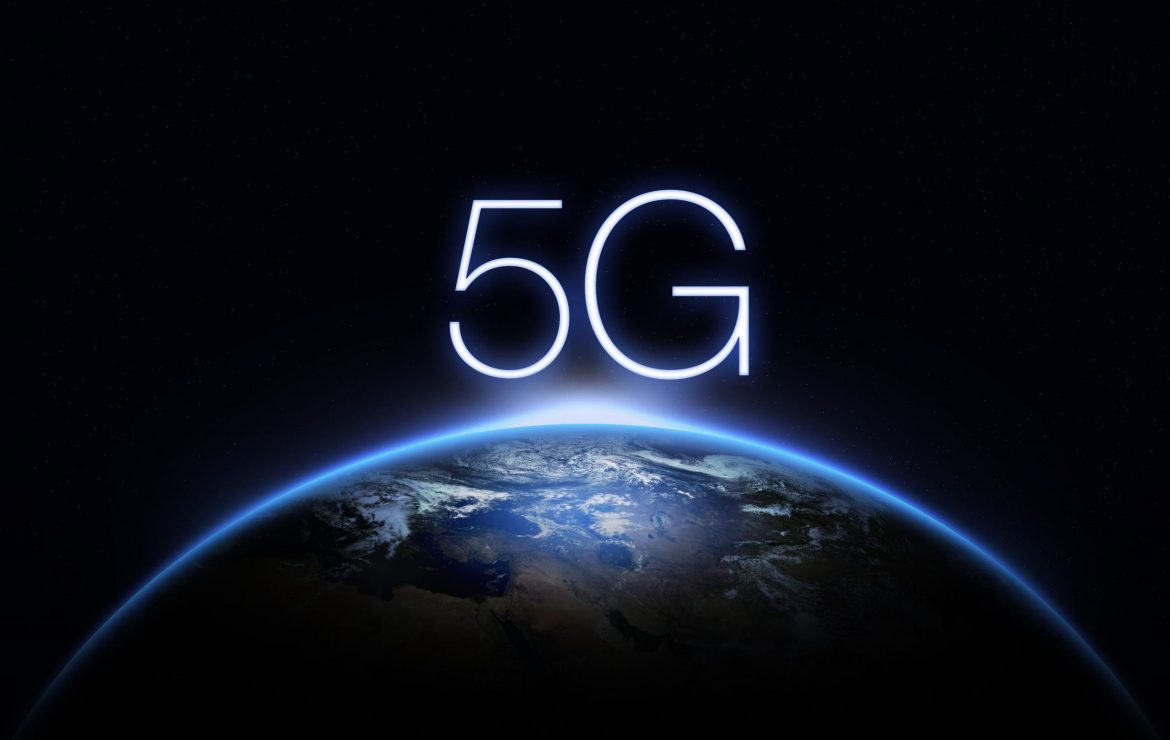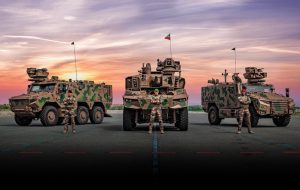Fifth generation (5G) mobile technologies are being rolled out over the globe. The UAE was the first Arab nation to launch this enabler of ‘superfast internet’ and the fourth in the entire world. In combination with advances in artificial intelligence (AI) and big data technologies, 5G is likely to be an accelerator for the overall digitalization of the globe. As these new technologies mature, they will greatly increase the speed of data transfers and enable for example the Internet of Things (IoT) and take unmanned and autonomous systems to a next level. New applications are expected to be a lot more disruptive than those running on 3G and 4G. For the armed forces, leveraging 5G could turn out to be transformative at the tactical, operational as well as the strategic level. This article looks into the main opportunities of 5G for military operations, as well as the main challenges that come with their development and maturation.
The main opportunities of 5G for the military
In its 5G strategy issued in May 2020, the US Department of Defense acknowledges 5G as a critical strategic technology and argues that “those nations that master advanced communications technologies and ubiquitous connectivity will have a long-term economic and military advantage.”. Indeed, with matured 5G technologies and successful combinations with other emerging technologies, the possibilities will be enormous. With the current outlook, the most obvious areas in which 5G can make a difference are those of situational awareness and understanding through Intelligence, Surveillance and Reconnaissance (ISR) systems, command, control and communications (C3), unmanned and autonomous systems, logistics and resource supply, and Augmented and Virtual Reality (AR/VR)-training and exercises.
Increasing situational awareness and understanding through ISR
5G technology enables massive interconnected network infrastructures, in which all sort of devices and vehicles can exchange data. 5G data moves a hundred time faster than 4G data, and latency is less than a millisecond. As existing ISR systems will be upgraded, this will become a game changer with regard to increasing situational awareness and understanding. Much larger amounts of data can be processed, and more information can be disseminated simultaneously. A denser network of battlespace sensors, weapons and vehicles can be connected over larger distances. Location determination will be more accurate, and this will enhance positioning, navigation and timing.
Improve Command, Control and Communications (C3)
The battleground environment will be ever richer in data, which makes for powerful fuel for algorithms and thus automation, in particular when combined with more advanced AI applications. 5G can also create alternatives to satellite communications and communication relay aircraft, which sometimes have significant latency simply due to the long distance a signal has to travel. Just like 5G can enable smart cities, it can make bases and the battlefield “smarter”. Information-driven operations will be made more robust and smaller military units can operate more independently, which is also likely to boost the importance of Special Operations Forces. Battlefield commanders get empowered with relevant actionable intelligence faster and will have more options to influence situations. Wearables and bodycams will become part of the communication network. Maps, photos and other information can be transmitted between military personnel and departments almost in real time during an operation.
Supplies, logistics and mobilization of resources
5G technologies, together with appropriate physical and virtual infrastructure upgrades, can also make a real difference with regard to combat service support and logistics. Existing or potential (hick ups in) supply chains are easily visualized and alternatives can be identified quickly. Supply depots and warehouse activities will be faster and more precise. The sensors of automated vehicles, such as drones and forklifts, can collect vast volumes of data and feed them to AI that automatically reorder supplies when stocks fall low. Predictive analysis on what supplies will be needed, how many, and at what locations will become better. Food, medicines and other supplies can be brought to very precise locations through 5G interconnected drones. All these possibilities will increase efficiency. It will not only be hugely cost-saving, but can also add to a competitive edge on the battlefield.
Unmanned and autonomous systems
5G technologies could help realize military intelligentization and enable new generations of unmanned and autonomous systems across all domains. Potentially, autonomous vehicles will no longer have to rely on on-board data processing limitations as they can store and access large databases (such as maps) in the cloud. Swarming, in which multiple autonomous systems cooperate and coordinate to achieve a task, will become a credible and executable military concept. The added precision could also improve the lethality of autonomous systems and robots – of course only if the operator is willing to provide non-human systems with the capacity of identifying, following and firing at a target, for example based on facial recognition or by recognizing other characteristics.
Augmented and virtual reality for military training
As 5G can minimize the boundaries between the digital and the physical world, it can provide a real boost to AR/VR applications. For the military, this is of great interest for training and exercises. The experience will be more real and, in combination with AI, the adversaries in training programs can adapt and ‘learn’, thereby demanding students to move to new levels and more challenging situations. These programs can be focused on mission planning and battlefield operations, but simulation combined with augmented reality can for example also create a powerful tool to conduct maintenance on critical warfighting platforms. And just like 5G will provide youngsters with the ability to participate in online games with players all over the world, so can armed forces stationed on different bases, engage in joint AR/VR exercises.
The main technological and other challenges
As pointed out in the previous section, the possibilities offered by matured 5G technologies are indeed massive and in conjunction with other emerging technologies, new applications can be truly transformative. Nonetheless, before all those benefits can be reaped, a number of important caveats and challenges will need to be addressed. Those include finding fruitful ways to exploit the electromagnetic spectrum’s higher frequency levels and being able to protect and defend the hugely growing network surface. Also, there are potentially unforeseen challenges due to the geopolitical context in which the 5G rollout is currently taking place.
Exploiting the spectrum’s higher frequency levels with 5G
5G technologies can be introduced in three segments of the electromagnetic spectrum: high band (millimeter wave); mid band and low band. Mid-band and low-band are often collectively referred to as “sub-6” (as in sub-6 GigaHertz). Sub-6 is the space where current 4G networks operate. These 4G frequency bands can be adapted for 5G applications which will ensure faster data transfers given that data can simultaneously be sent and received from the same antenna using the same frequency.
However, the most powerful utilization of 5G will come with the technological ability to exploit those frequencies at the top of the spectrum, referred to as the millimeter wave spectrum. The higher the frequency, the shorter the actual length of the wave and the more data a wave is able to carry. However, exploitation is not that easy: because the shorter the wave, the quicker it tends to fade. Millimeter waves fade already after a few hundred meters. As a comparison: with some of the 4G frequencies this occurs only after several kilometers. To make use of these millimeter waves, many more cells sites are required. In addition, millimeter waves can be absorbed by rain and they cannot travel through hard surfaces, meaning the presence of buildings and vehicles can disrupt the waves. Thus, whereas the benefits of using millimeter waves can be enormous, it is also costlier and requires a lot more infrastructure.
Protecting the network
5G and the IoT will multiply the number of connected devices hooked to a specific network. 5G networks will also become part of critical infrastructure and as such, it will be a desirable target for cyberattacks. Having more interconnected devices per network also means more potential weak spots for hackers. The exposure to digital threats such as eavesdropping and traffic analysis, jamming, (Distributed) Denial of Service (DDoS) and Man in the Middle Attacks (MiTM) grows. And as base stations will need to be endowed with additional antennae to support the multiplication of devices, the opportunity for signal interference will also increase. At the same time, 5G could also be secured with more complex encryption. But that might increase latency again.
Another issue is that 5G will heavily dependent on software. Flaws or malware in software could prove problematic. Some analysts also fear that military and industrial espionage tools are being built into foreign-designed and produced network components. This fear is based on an interpretation of China’s National Intelligence Law, enacted in June 2017. That law declares that “any organization and citizen shall, in accordance with the law, support, provide assistance, and cooperate in national intelligence work, and guard the secrecy of any national intelligence work that they are aware of.” This could mean that Chinese companies are required to cooperate with intelligence services, also if that means installing backdoors in systems they sell.
Geopolitical challenges
The development and rollout of 5G technologies has taken central stage in a heated international debate, with the United States and China as the protagonists. On the one hand, the rivalry is driven by simple economics: the country that has the so-called first mover advantage will be awarded with massive job creation and billions in profits. On the other hand, this rivalry is driven by geopolitical and even military ambitions about global leadership. Chinese companies such as Huawei and ZTE, currently have the technological upper hand and 5G is an important element in China’s own strategy of military-civil fusion and for its ambitions on the world stage. At the same time, the US will for example want to avoid that technologies it uses in its military systems, or those used by allies, include foreign elements that can compromise the security of the entire network. This can cause major issues with regard to interoperability.
Dr. Saskia van Genugten













